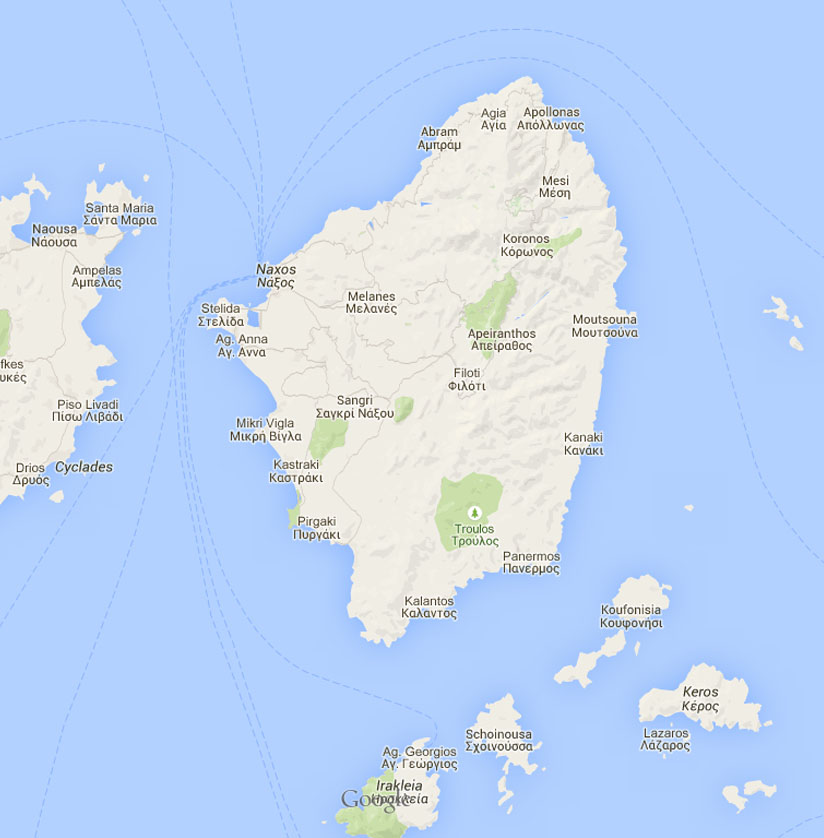Potamia is a traditional village set on a hillside overlooking a wonderfully lush and cool valley with a population of 300 inhabitants. It is dotted with monuments of Naxos’ rich history and its economic and cultural past, ranging from the Middle Ages onwards. Water mills, chapels and ruined towers are spread around the village and general area. Each neighborhood hosts the ruins of one or two olive mills and the area still yields excellent wine, honey, herbs and fruit.
It is comprised of three settlements Pano Potamia, (Upper river), Mesi Potamia, (Mid river) and Kato Potamia, (Lower river), making it a excellent place for hiking where one of the characteristics are the private, flower laden little gardens. The whole area is a hiker’s paradise, with many trails, traditional stone bridges, ponds with ducks and waterfalls populating the ponds even in the winter months.
The village, located in the center of the island, retains its traditional colours and is nestled in an idyllic environment with abundant flowing waters and great old plane trees. Potamia is rich in vegetation and springs due to its mountainous location. It is the village locals select when going out for dinner, as it has lovely taverns offering good quality wine and excellent food. Potamia is about 9km from Chora (Naxos Town) by road, via Galanado and on the way to Chalki.
In the Medieval period, Potamia was very prosperous, the many Venetian towers and the 14 mills, whose ruins can be seen in the area till today attest to this. It realized its prime during the period of Frankish rule, when it was the popular country resort for the Venetian nobility.
In the Lierado neighborhood in between olive groves and huge plane trees, stands the 17th century the three-level Tower of Kokkos, which had a watermill in its basement. Inscriptions can be seen on the marble beams above the tower’s entrances. According to local legend, the tower played a part in the setting of a Romeo-and-Juliet like love affair that involved members of the rival Kokkos and Barozzi families. It is the most impressive structural site in the area.
The taverna in Ano Potamia is well-known for its idyllic setting and appetizing foods. It is named Pighi (Greek - Spring) and is one of the best taverns on the island. Naturally, it is situated next to a water spring.
A feature in Ano Potamia is the square with the old water fountain, next to the chapel of Agios Ioannis Theologos (which was built in 1799), while one of the 14 old watermills situated on the outskirts of the settlement has undergone restoration and can now accept visitors.
The unfinished archaic stone statue of Kore, a mythical female figure, is seen in the upper part of the village (called Ano Potamia), on the way to Halki (Chalki). Some distance away, on the way to the village of Melanes you will find a male counterpart.
The ruins of Potamia Castle (Greek - Apano Kastro), a small fort built by the Venetian Duke of Naxos Marco Sanudo in the 13th century as a lookout against pirate invasions, are seen on a hilltop on the way to Drymalia , the former municipality of eastern Naxos.
The most important of the 37 churches in the Potamia area is Agios Mamas, a 10th century Byzantine basilica at Mitropoulos, on the road to Filoti.
The main source of income for the approximately 350 permanent residents of Potamia today is farming and livestock. The village is also well-reputed for its sweet preserves, excellent cheese variety and local wine.
